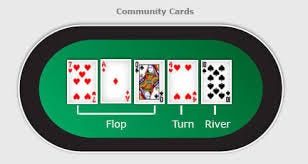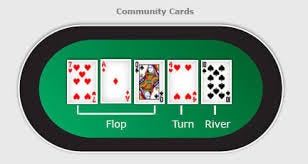Note: If you like this or any of my other posts, please share.
When I speak to other investors, one question that usually comes up is, “What do you think about the stock market?” Although it is never stated, there’s an assumption that we are talking about the short term; otherwise, my answer would always be: “Over a twenty-year period it will outperform every other asset class.” That’s no fun, a little annoying actually.
We ask for each other’s outlook, even though we know that the market’s next move is impossible to predict. We do it partly because it’s fun and partly because the discussion itself, while not yielding any reliable conclusions, can illuminate some of the key factors that figure into one’s medium-term positioning. But even in the fruitless effort to forecast the market, no one ever frames their opinion in the way that would be closest to accuracy, i.e., “I think it’s x% likely to go up, x% likely to go down, and x% to flatline.”
Former professional poker player Annie Duke has written about effective decision-making, which she calls “thinking in bets.”1 She states what all pro gamblers know: outcomes are determined both by skill and luck. She advises decision-making teams to embrace uncertainty, focusing on the quality of their process and improving it using probabilistic reasoning. Skilled poker players do this almost automatically, calculating “pot odds” — the size of the pot vs. their probability of winning — before betting. Luck may go against them for awhile, but over time the consistent method gives them an edge. Yet most investors in stocks seem to approach each decision with a binary mindset: all bullish or bearish, depending on what they heard that day on CNBC, or read in the WSJ, and how they are feeling.2
When I look back on decisions I’ve made as a fund manager, I find that some of my biggest mistakes came from taking a binary view. To use the most recent, and very consequential, example, in the weeks before the 2022 Russian invasion of Ukraine, my team assigned the event a 25-30% probability, higher than our peer funds did, and we understood the severe market consequences. The correct decision, which could have resulted from Annie Duke’s process, would have been to reduce our exposure by 27.5% of the expected market decline if the invasion were to happen.
We thought at the time that the index decline in case of an invasion would resemble the 50% peak-to-trough drop in 2014 following the Crimea annexation, so probabilistic thinking would have had us sell about 15% of our Russian stocks.3 In the event, that wouldn’t have been nearly enough, as the 2022 decline turned out to be much worse, because of the wider war and Western sanctions followed by Russian capital controls. But at least we could’ve felt better for having used a disciplined process, and would have had some cash to deploy elsewhere.
Instead, I for one4 stayed anchored on the 70-75% chance that it would blow over and the repeated self-assurances — shared by almost all Russia experts — that the invasion “made no sense” and Putin’s troop buildup had to be a bluff. (Turned out it did make no sense, but also that it is impossible for a Western investor to put himself inside the mind of an emerging market autocrat.) We took no action, and by the time the 25-30% probability event did occur, it was too late.
Besides the sin of following consensus on the war, another reason we’d found it hard to reduce was that we loved our portfolio from the bottom up, and it was cheap — something that often makes emerging markets investors stay in, even when a country’s macro is exploding. Genghis Khan’s horde could be riding into Persia, and some fund manager would still be explaining that Bank of Persepolis was now at only 0.5x book value. Moreover, by the eve of the Ukraine invasion our best positions were already down 20%+ from their highs, and therefore psychologically hard to sell. Refusing to sell after a first big drop is an investing mistake so common that it deserves its own post.
Calculating expected loss, as we should have done under the thinking in bets rubric, or expected return is integral to the math-based branches of investing: bonds and options. Stock investing, besides arbitrage, is more open-ended and less quantifiable. Anyone who has generated a discounted cash flow analysis knows how much they rely on malleable predictions and assumptions. Still, even just the effort to quantify the potential return on a stock will nudge an investor toward probabilistic thinking, and so is a worthwhile exercise.
There are times — it happens to me three or four times a year — when a buy or sell decision becomes clear and obvious. Even then, investing is not no-limit poker and you go all in at your peril.5 A buyer needs to consider the risk and liquidity of the beloved stock and choose an appropriate position size. A seller should consider whether his negative opinion is overstated or temporary, and whether he will find himself having to buy the stock back later. I have known professional investors who have “gotten bearish” on the S&P and gone 100% to cash. Given where the index is today, for this decision to have been the right call they had to buy back in at a lower price. If any of them did so, they would probably have called me to brag about it.
The phone hasn’t rung yet.
Annie Duke, Thinking in Bets (Penguin 2018)
Researchers are split on whether the market does better on sunny days.
After Crimea, we did correctly reduce our Russian exposure by 30%, but then we were reacting to events, not probabilities.
To be fair, at least one of my colleagues wanted to sell some.
I did go all in once, on Russia in January 1994, but then I had almost nothing to lose.




